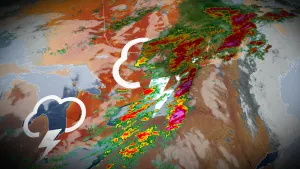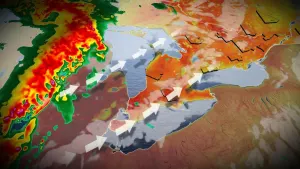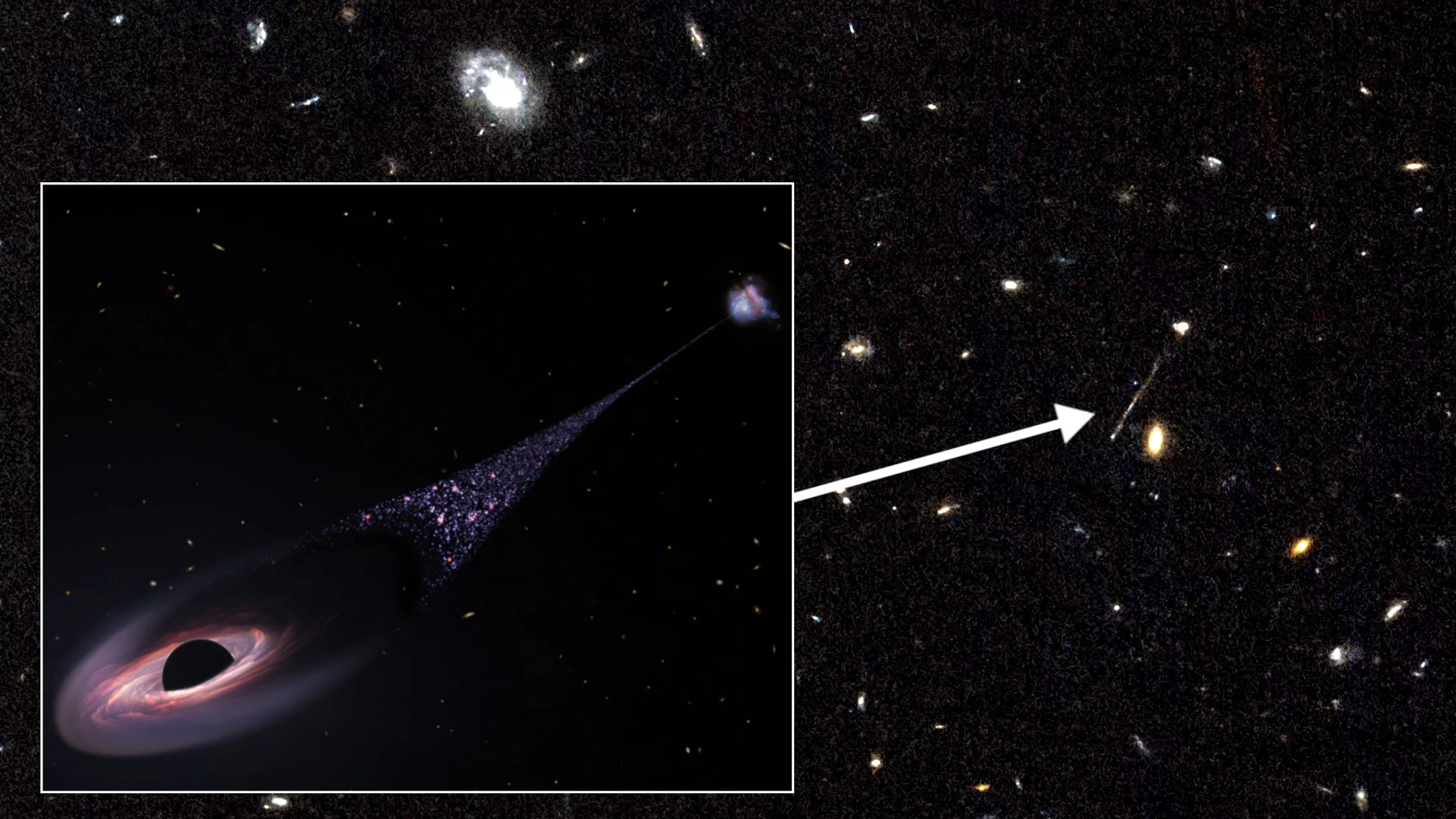
Hubble spots 'runaway' black hole leaving trail of bright stars in its wake
What was first thought to be an imaging glitch has turned out to be a remarkable discovery.
Astronomers using the Hubble Space Telescope appear to have captured a runaway supermassive black hole leaving a bright trail of stars behind it as it streaks through intergalactic space.
There are so many amazing things to discover in the cosmos that astronomers sometimes find them purely by accident. This is what has happened in the case of a recent image taken by the Hubble Space Telescope, which shows a bright streak among the stars and galaxies captured there.

The bright streak at image centre (and enlarged in the inset frame) first looked to be a cosmic ray hitting the Hubble Space Telescope's camera. Instead, it may be a runaway black hole that was ejected from merging galaxies (at the upper-right end of the streak). Credits: NASA, ESA, Pieter van Dokkum (Yale); Image Processing: Joseph DePasquale (STScI)
At first glance, this bright line was dismissed as an error.
"I was just scanning through the Hubble image and then I noticed that we have a little streak. I immediately thought, 'oh, a cosmic ray hitting the camera detector and causing a linear imaging artifact.'" Pieter van Dokkum, the Yale University astronomer who led the study of this unusual discovery, explained in a NASA press release.
Cameras in space and on Mars record random cosmic ray strikes fairly often. These high-energy particles are emitted by the Sun or can originate from outside the solar system. When one hits a camera's light sensor, depending on the angle of the impact, it shows up as a bright spot, a splotch, or a long streak. Scientists using these cameras have figured out ways to remove these artifacts, but in this case, it didn't help.
"When we eliminated cosmic rays we realized it was still there," van Dokkum said. "It didn't look like anything we've seen before."
To gather more clues about what this might be, van Dokkum and his colleagues used the Keck I telescope atop Mauna Kea in Hawaii to look at the spectrum of light being emitted by it. Their observations revealed that it was full of bright stars.
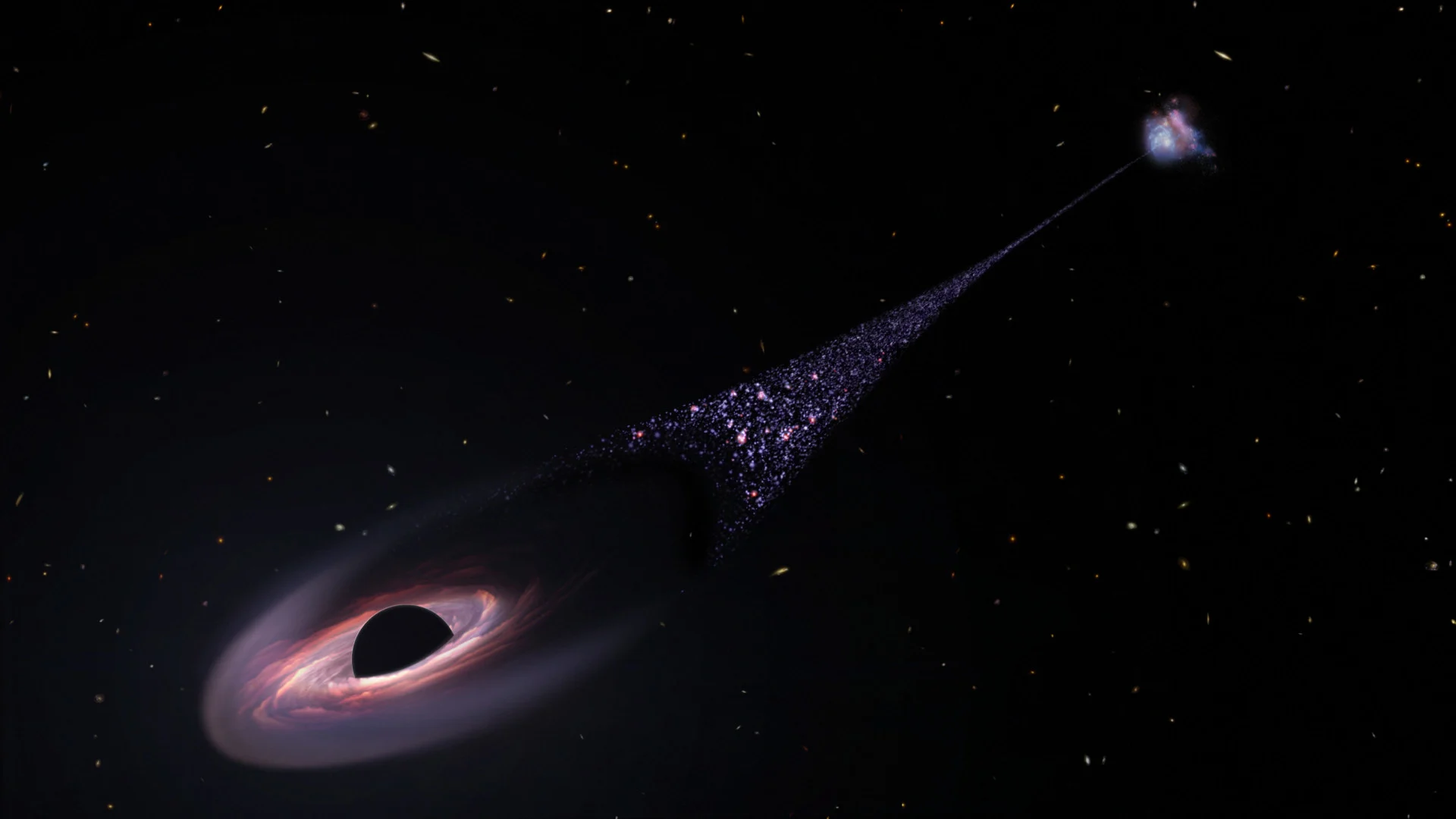
This artist's impression shows what this streak of stars may look like from a closer perspective, revealing the runaway supermassive black hole and its stellar 'contrail' as it flies through intergalactic space. Credits: NASA, ESA, Leah Hustak (STScI)
From this discovery, they believe that we're seeing a streak of stars, roughly 200,000 light years long, produced by a rogue black hole ploughing through intergalactic space after being ejected from the merger of three galaxies.
According to NASA, the astronomers think the first two galaxies merged around 50 million years ago, with their two supermassive black holes circling each other as a binary pair. When the third galaxy joined them, the black hole at its core upset the balance of the other two. As a result, one of the three black holes was flung away at high speed, and we are seeing the aftermath of it travelling through space.
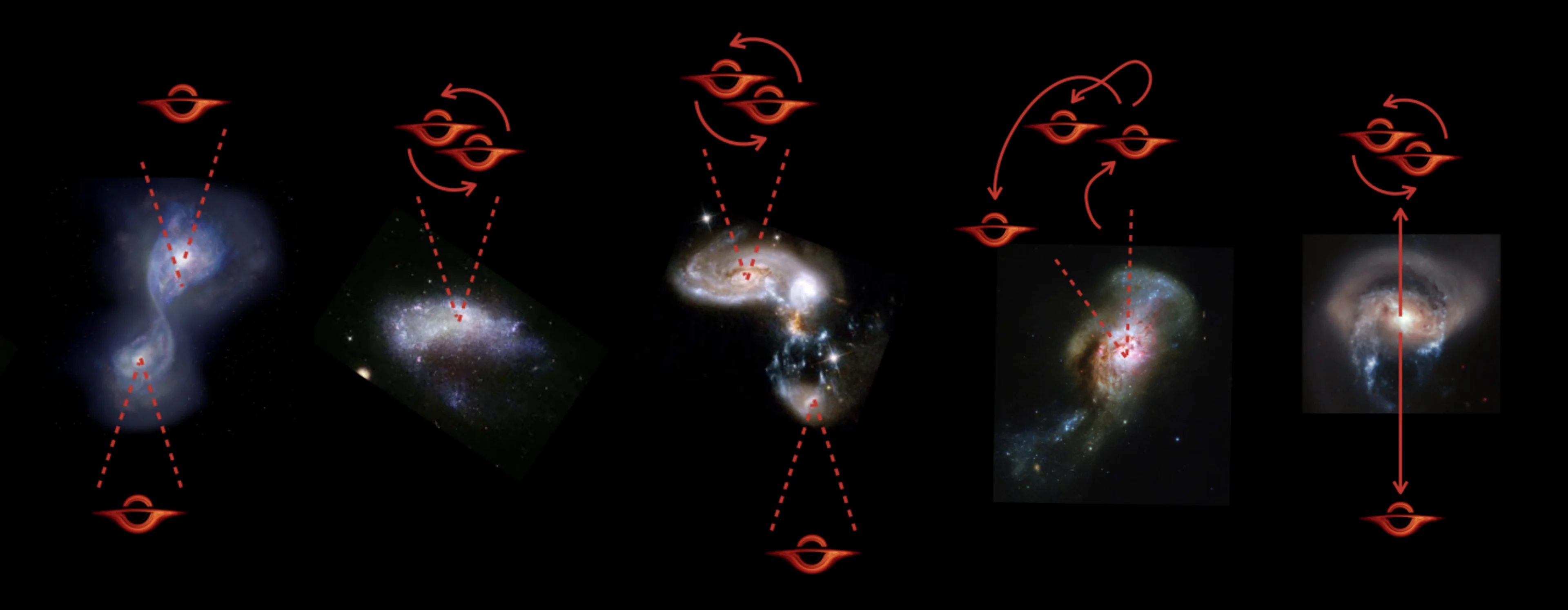
This diagram illustrates the process of the proposed galaxy merger and ejected supermassive black holes. It is thought that the singular black hole ejected towards the bottom of the final panel is the cause of the bright streak captured by Hubble. Credits: NASA's Goddard Space Flight Center/Saslaw et al. 1974/Scott Sutherland
"We think we're seeing a wake behind the black hole where the gas cools and is able to form stars. So, we're looking at star formation trailing the black hole," van Dokkum told NASA. "What we're seeing is the aftermath. Like the wake behind a ship we're seeing the wake behind the black hole."
"Something like this has never been seen anywhere in the universe," van Dokkum explained in a Keck Observatory statement. "We've known for a long time that supermassive black holes exist and it had been predicted for about 50 years that they could sometimes be ejected from galaxies. If confirmed, this would be the first evidence of a runaway supermassive black hole, proving this prediction."
The research team says that follow-up observations are needed to confirm these findings. However, they noted a couple of other features that support their interpretation. First, they spotted something on the opposite side of the host galaxy, which may have been caused by the binary black hole pair being ejected in the other direction. Second, the host galaxy does not appear to have an active black hole at its core.
"It was very exciting to piece this puzzle together," van Dokkum said in a Yale University press release. "Even though Hubble has been around for many years now, it can still find entirely new phenomena in the night sky."









